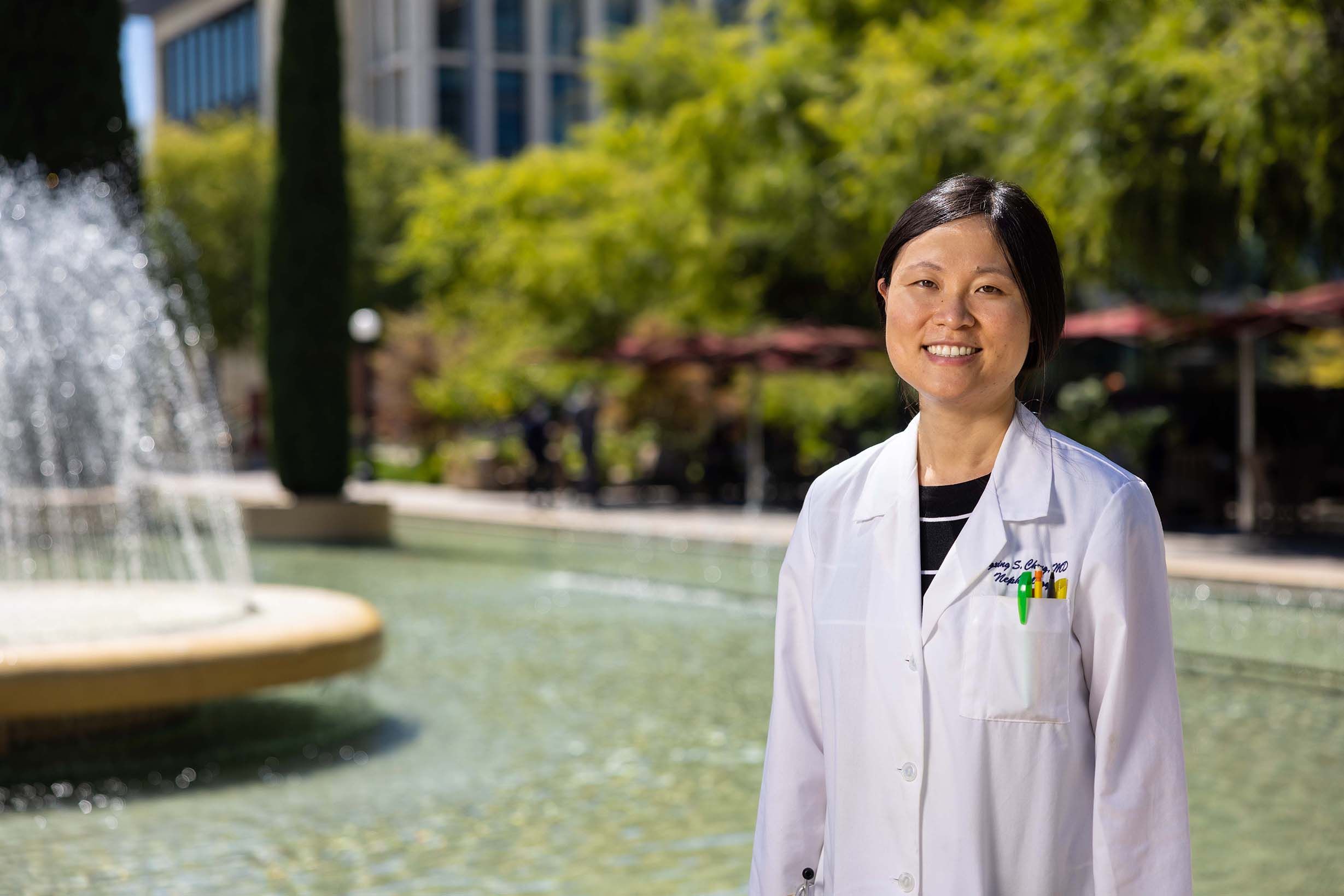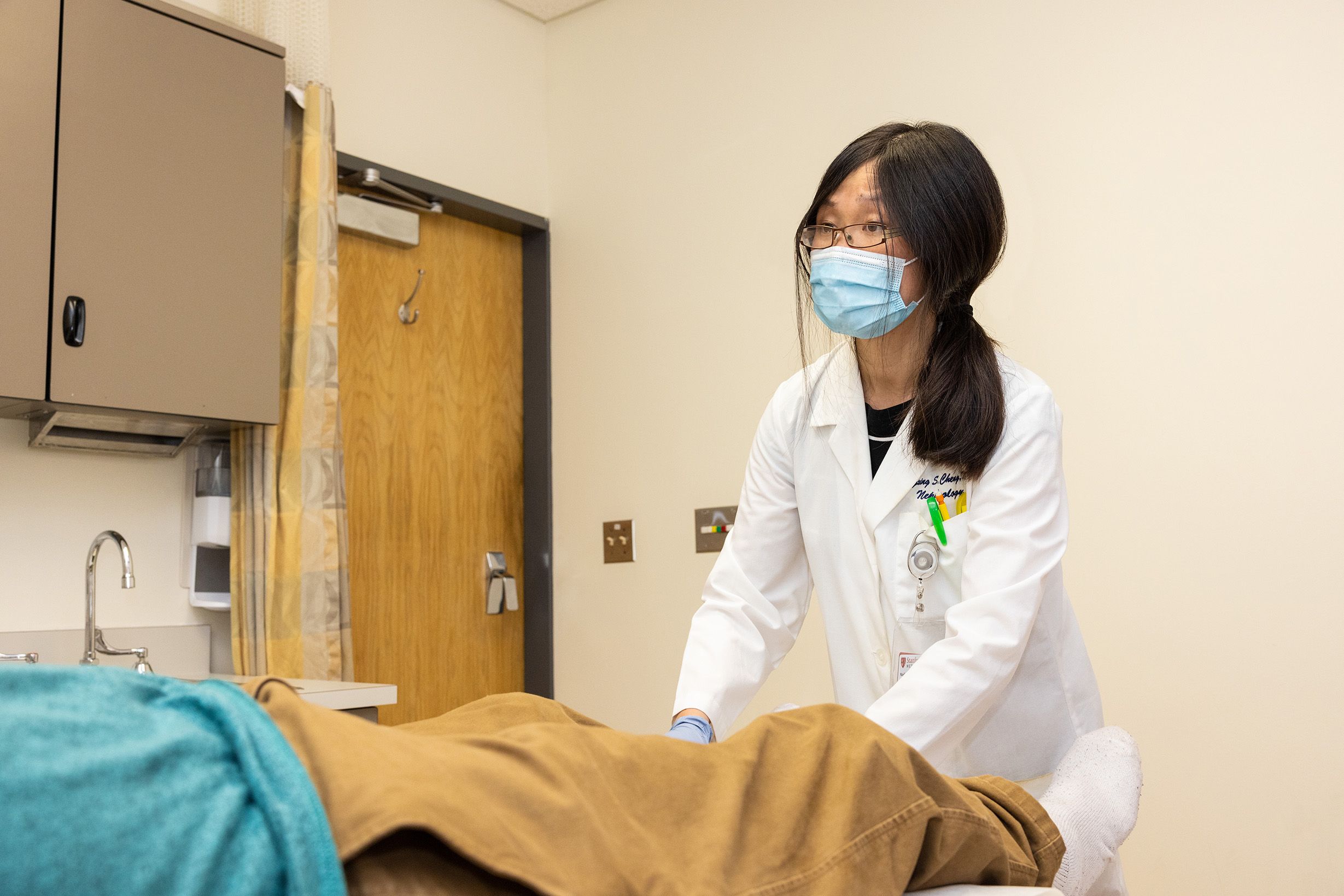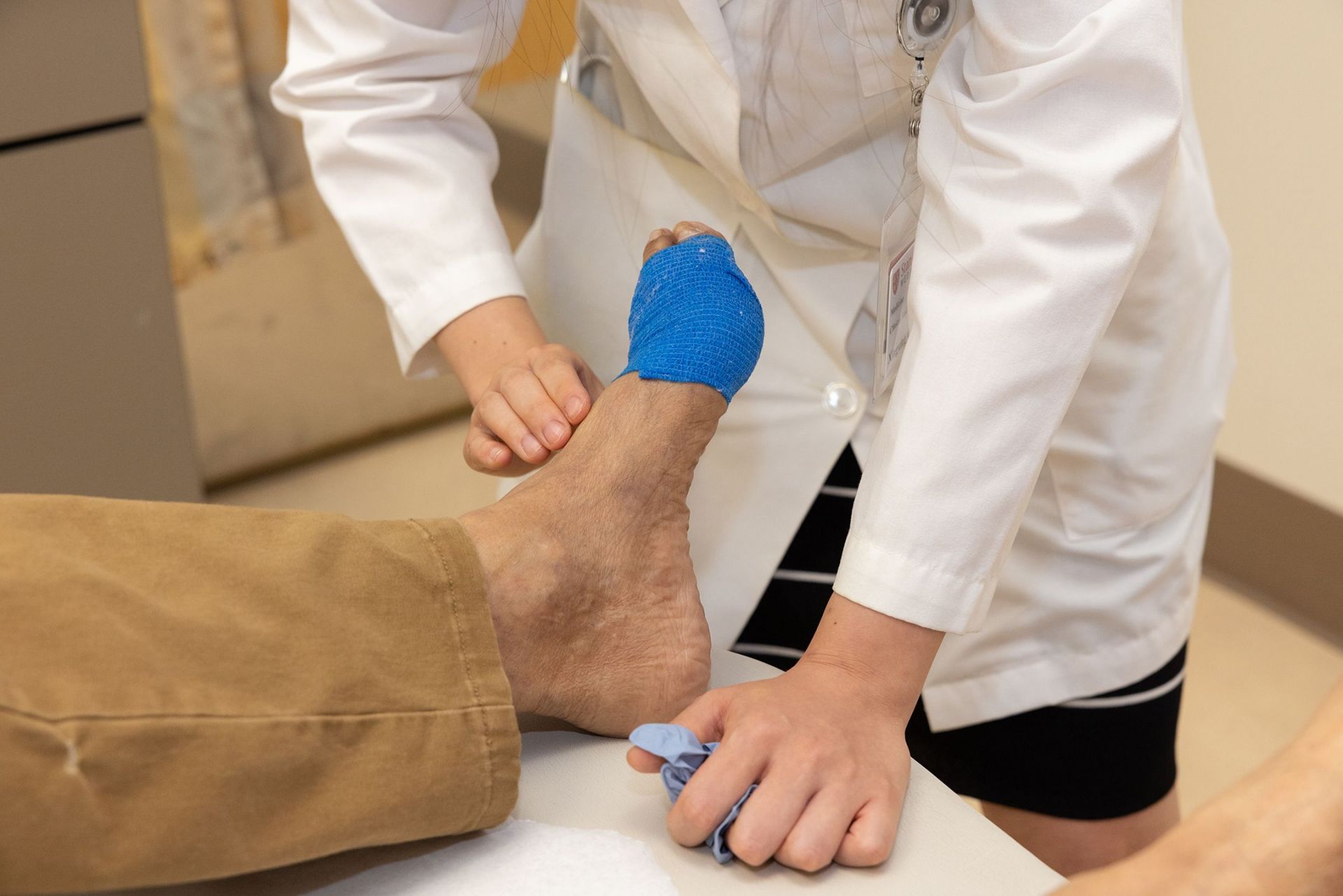Dynamic Tracking System Boosts Kidney Transplant Eligibility
List management strategy improves rate of deceased donor transplantation

Dynamic Tracking System Boosts Kidney Transplant Eligibility
List management strategy improves rate of deceased donor transplantation
Ten years ago, Miriam Gutierrez, 47, was diagnosed with lupus. “Though I took medication for that condition,” she recalls, “my kidneys started to fail, and I was put on home dialysis.” She had a catheter attached to her abdomen, which enabled nightly cleansing of her blood.
Gutierrez was told she had about a 1% chance of getting a donated kidney because of the complex nature of her case, which included elevated antibodies, a blood type that would be difficult to match, and having had many blood transfusions.
In 2020, after eight years on dialysis, her physician referred her to Stanford for evaluation. Using the parameters of the Transplant Readiness Assessment Clinic (TRAC), she began monthly visits to monitor her compatibility with potential donated kidneys. Two years later, she remembers, “I received a phone call on a Friday night saying I had matched with a donor kidney. I went to Stanford Hospital on Saturday morning and had the transplant surgery that day.”
“I’m very grateful,” she says. “Now my life is back to normal, and I’m looking forward to visiting my family in Mexico soon.”
Dramatic increase in Rate of Kidney Transplants
Gutierrez’s story is just one example of how the Stanford Department of Medicine’s TRAC program has resulted in a dramatic improvement in the rate of kidney transplants performed at Stanford. “We now do about 150 kidney transplants annually,” says nephrologist Xingxing Shelley Cheng, MD, clinical assistant professor, medicine–nephrology. “Before the TRAC program started, it was under 100.” Though part of this increase may be due to more kidneys becoming available, the rate of increase at Stanford is considered excellent.
Cheng explains that “the key to an effective transplant program is first, obtaining an organ, and second, aggressive management of the waiting list to assure that all reasonable patients are considered for any given organ offer.”
In this scenario, Cheng notes that “it’s the donor who allows the magic to happen; the transplant team is just the facilitator.”
End-stage kidney failure is defined as when kidneys have lost 85%–90% of

“We now do about 150 kidney transplants annually… Before the TRAC program started, it was under 100.”
– Xingxing Shelley Cheng, MD
their function. Until the mid-1980s, the only long-term treatment for this condition was dialysis — a process that cleanses the blood of excess water and other waste materials. Dialysis is usually performed at an outpatient facility (though some patients can have home dialysis treatments) at least three times a week. Each treatment takes about four hours.
The kidney is the most common and successful of solid organ transplants. But because of their effectiveness, kidney transplants have become so sought after that there have never been enough donor kidneys available to fill the demand for them. Many people wait as long as 10 years for a kidney. Many die waiting.
List Management Strategy Drives Success of TRAC Program
Nationally, more than 100,000 people are waiting for a donor kidney. More than 1,900 of them are currently on the Stanford Medicine kidney waiting list.
In 2016, Stanford nephrologists launched the TRAC program, which was designed to streamline the waiting-list-management process. They wanted to find a way to match kidney donors and recipients more efficiently by broadening the criteria for transplant eligibility and making it more likely that an available organ could be transplanted into a patient on the list.
“It is impossible to predict when a donor kidney will become available,” comments Cheng.

Xingxing Shelley Cheng, MD
“It may be any time, day or night, far or near. And if a potential recipient is found, he or she must get to Stanford immediately for an updated physical and psychosocial evaluation.”
If it’s been a long time since the patient’s most recent clinical assessment, they may have experienced illness or other physical challenges that could affect their likelihood of success with a donor kidney. “By the time the evaluation is completed,” notes Cheng, “the kidney may no longer be viable, or we may have found out that the patient and the organ are not a good match.”

“We started the TRAC program by developing a two-tiered list,” says Cheng. “Tier 1 has all the people who are waiting for the perfect kidney to become available, no matter how much time it takes. Tier 2 has people we feel could be candidates for a donated kidney that might not be perfect but that could still function with appropriate support, care, and patient education.”
This approach is based on taking proactive, aggressive actions to prepare patients on both tiers for a possible transplant before a kidney becomes available. Of the 1,900 people on the Stanford kidney waiting list, a small fraction is ready for surgery at a moment’s notice. Many live far away or may not be cared for by a Stanford physician.
The key to an effective transplant program is first, obtaining an organ, and second, aggressive management of the waiting list to assure that all reasonable patients are considered for any given organ offer.
– Xingxing Shelley Cheng, MD
The key to an effective transplant program is first, obtaining an organ, and second, aggressive management of the waiting list to assure that all reasonable patients are considered for any given organ offer.
– Xingxing Shelley Cheng, MD
Pre-transplant Readiness Improves Kidney Transplant Rate
Cheng and the kidney transplant team began reviewing the Tier 2 patients. They wanted to determine if, by reevaluating those patients before a kidney became available, they could prepare the patients to be ready for surgery with very short notice. This involved doing all the necessary medical workups and education needed in advance of a donor kidney becoming available.
In making these assessments, Cheng and the transplant team rely on the Kidney Allocation Score (KAS) to determine a patient’s priority for kidney transplant according to national allocation policies. The KAS is a composite of the amount of time the patient has been on dialysis, the amount and kind of antibodies the patient has, the patient’s blood type, and other factors.
Using the KAS, Cheng and her colleagues established wider parameters for eligibility for a kidney transplant. Doing this kind of evaluation for every person on the waiting list would be very time-consuming and not necessarily result in an organ match. But when focusing on the patients who would more likely be offered a donor kidney based on their KAS, even one that is not considered “perfect,” the pool of possible recipients becomes more manageable and results in a group of patients that is more likely to succeed.
“Our team meets weekly to review the patients who were seen that week who may qualify for this proactive management. With input from transplant surgeons, we can see trends developing so we can predict who on our lists might be eligible for an organ and ask those patients to come in for a clinical workup so they’re ready if an organ does become available.”

Cheng performs a medical workup and educates a patient
Roberto Gonzalez, 69, was one of those patients. He had been on dialysis for seven years before being enrolled in the TRAC program. He has diabetes and a rare blood type. “I was told I’d probably have to wait eight to 10 years for a compatible kidney,” he recalls. But five years into his dialysis treatment, Stanford enrolled him in the TRAC program, with monthly blood tests and follow-up.
In February 2022, Gonzalez received a phone call from his physician at Stanford letting him know that a kidney match had occurred. “I went to the hospital at 5:30 p.m.,” he says. “The surgery took place the next morning at 1 a.m.” He feels fine now and credits his faith and the skills of the Stanford Medicine team for his recovery. “On a scale of 1 to 10, I rank Stanford at 11+,” he says.
